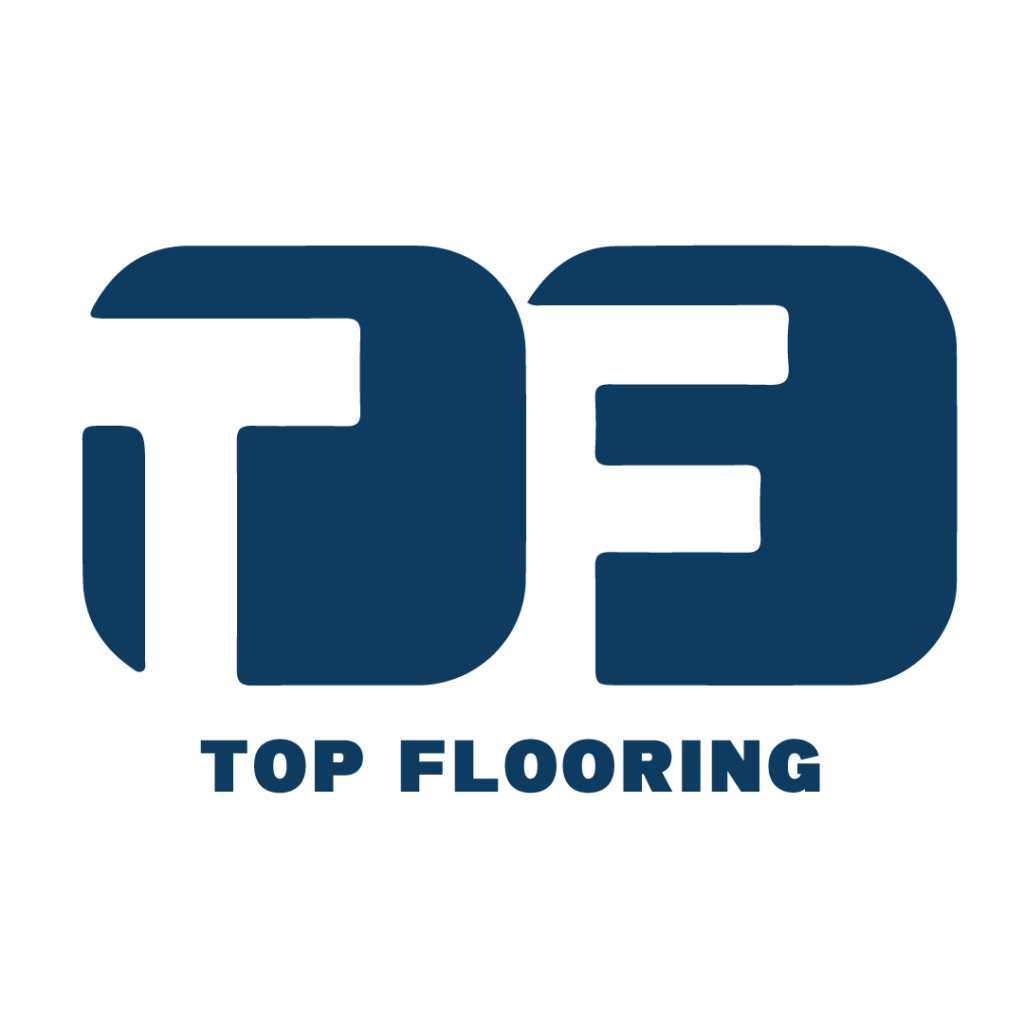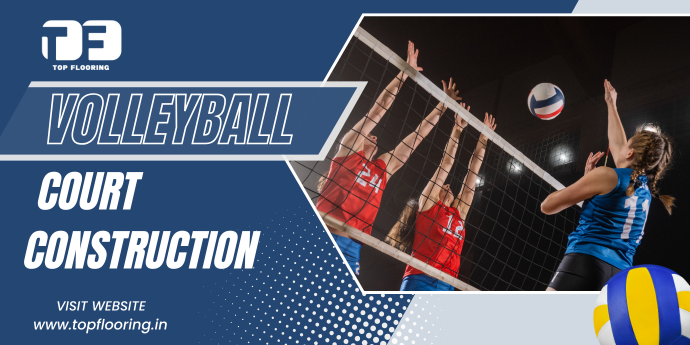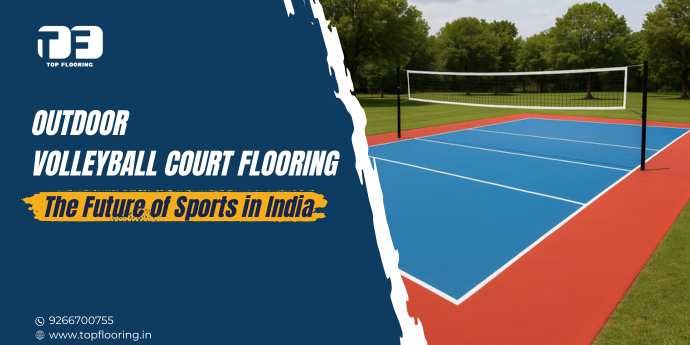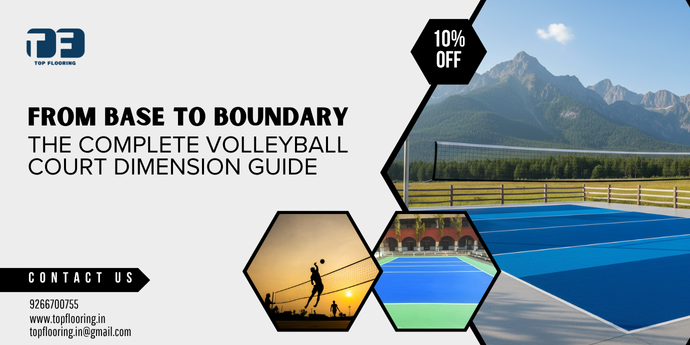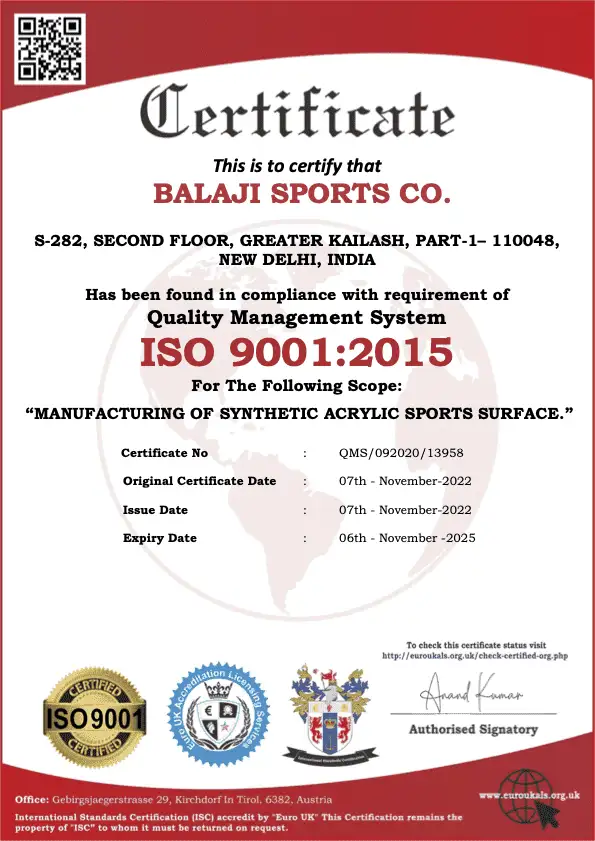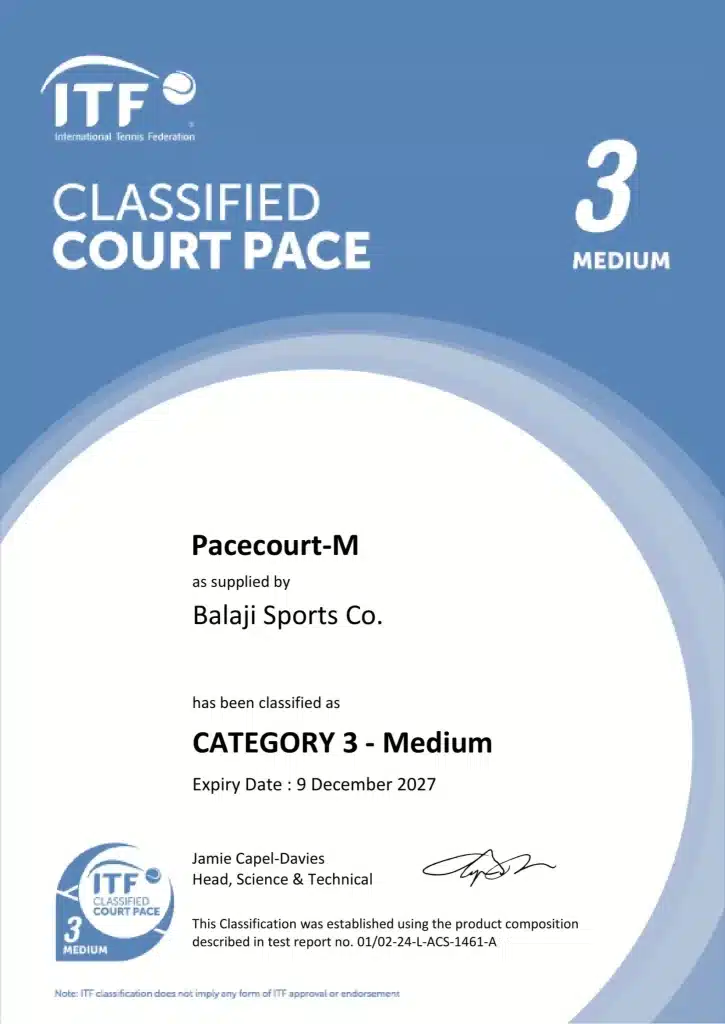As volleyball grows in India, the need for good-quality volleyball court construction is increasing. From schools and colleges to professional academies and public parks, the demand for courts that are reliable and performance-ready is rising. Volleyball is no longer just a recreational activity—it’s a competitive sport that requires proper infrastructure to ensure safe play, durability and professional standards. Volleyball court construction companies in India offer customized solutions using certified materials and the latest techniques to deliver long-lasting courts. Whether indoor or outdoor volleyball court construction, choosing the right flooring and design is crucial to enhance player experience and international standards.
Why Proper Volleyball Court Construction Matters
Good volleyball court construction is a must to have consistent play, minimize injuries and have long-lasting durability. In India, where the climate is scorching summers and heavy monsoons, choosing the right volleyball court flooring material is crucial for both indoor and outdoor volleyball court construction. The surface should be resilient, non-slip and weather resistant to support safe play and reduce maintenance over time.
As volleyball is gaining popularity in schools, colleges, sports academies, and residential complexes, the need for expert volleyball court construction companies in India is on the rise. These professionals understand the sport’s technical requirements and offer customized solutions using FIVB-compliant materials like synthetic acrylic flooring, PU flooring, or modular tile systems.
This blog will guide you through every aspect of synthetic volleyball court construction—from choosing the right surface to volleyball court construction cost, design considerations and post-installation care. Whether you are building a new court or resurfacing an existing one, this guide will help you make informed decisions prioritizing performance, safety and long-term value.
Importance of Professional Volleyball Court Construction
Boosts Player Performance: Professional volleyball court flooring gives you consistent bounce and grip, allowing you to move with confidence and play to the best of your ability.
Reduces Injury Risks: High-quality surfaces provide proper cushion coat and shock absorption, reducing stress on joints and injuries.
Long-Lasting: Built to withstand India’s extreme weather conditions—heat or rain—for long-term performance.
Meets FIVB Standards: Courts built with exact dimensions and markings for competitive play and international training.
Aesthetics: Vibrant colors, smooth finish and custom designs to give a professional look to your sports facility.
Player Confidence: A well-maintained, high-performance surface to play more focused and effective.
All Facility Types: For schools, academies, housing societies and public parks looking for professional-level.
Types of Volleyball Courts in India

Indoor Volleyball Courts
- Wooden Flooring: The best for competitive indoor volleyball court flooring.
- PU (Polyurethane) Flooring: For professional indoor volleyball court setups.
- Vinyl Flooring: For multi-purpose indoor sports facilities like schools and community halls.
Outdoor Volleyball Courts
- Synthetic Acrylic Flooring: For India’s climate due to its weather resistance, UV-resistance and high durability.
- Modular Tiles: For temporary or semi-permanent volleyball courts.
- Concrete Base with Coating: For long-term use with minimal maintenance.
Pros and Cons Summary
- Acrylic: Low maintenance, non-slip, and colorful good for schools and parks.
- PU: Premium comfort with higher cost.
- Modular Tiles: Flexible and DIY friendly slightly lower performance.
- Concrete: Budget-friendly less cushioned underfoot.
Best Materials for Volleyball Court Construction
Choosing the right volleyball court flooring is key to performance, safety, and long-term durability. Synthetic acrylic flooring is the preferred choice for outdoor volleyball courts. It’s UV resistant, weatherproof, available in custom colors, and low-maintenance—perfect for Indian conditions.
For indoor volleyball courts, PU (polyurethane) flooring is a seamless, cushioned surface with good shock absorption—ideal for professional play. Vinyl flooring is another budget-friendly and low-maintenance indoor option—good for schools and recreational spaces.
Modular tiles are a flexible, DIY-friendly option for both indoor and outdoor use. These interlocking tiles are quick to install and can be moved or replaced easily. A concrete base with an acrylic coating is a low-cost option for outdoor use—durable with minimal maintenance.
Each has pros, so selection depends on location, usage, budget, and comfort.
Volleyball Court Construction Process
A successful volleyball court construction begins with a detailed site inspection, evaluating the terrain, available space, and regional climate conditions. This ensures the chosen materials and design will suit the environment and usage needs. For outdoor volleyball court construction, drainage planning is critical to avoid water accumulation and ensure longevity, especially during India’s monsoon season.
Next is base preparation, where the land is leveled and a solid foundation of concrete or asphalt is laid to support the court structure. The surface installation follows, depending on the chosen material—whether it’s synthetic acrylic, PU, or modular tiles. Each layer must be applied carefully for optimal performance and durability.
Line marking is done using FIVB-approved dimensions and markings, ensuring the court meets international play standards. Additional branding and customization options such as logos, vibrant zones, or sponsor tags enhance the court’s visual appeal. Finally, post-installation support includes regular cleaning, resurfacing, and minor repairs to maintain the court’s quality and safety over time.
Volleyball Court Technical Specifications
A standard volleyball court is 18 meters long and 9 meters wide. There should be a free zone of at least 3 meters all around the main court for player safety and movement. For indoor courts, the ceiling height should be at least 7 meters high.
The court surface should be level, shock absorbent and slip resistant to reduce injuries and ensure consistent ball bounce. Only high-quality materials approved by global sports bodies like FIVB should be used for long-term performance and safety.
Top Flooring ensures every project meets international standards. We offer FIVB standard outdoor courts, durability & expert installation, and we are the trusted name in volleyball court construction in India.
Volleyball Court Construction Cost in India
The volleyball court construction cost varies widely in India. This will depend, to some extent, on the material selection, the site conditions, and the customization requirements. All these help to build the right court that lasts a long time and is value for money.
Main Cost Factors:
- Court Size: Large courts or bigger buffer zones require more material and labor.
- Surface Type: Synthetic acrylic flooring materials are cost-effective for outdoor use, and PU flooring is for premium indoor purposes.
- Site Conditions: Sloppy or uneven sites require more work in base preparation.
- Customization: Color logos, multi-color zones, and textured finishes increase the cost of the final work.
- Location: Local labor charges, transportation, and material availability also influence the cost.
To get the right estimates and quality outcomes, hire Top Flooring for volleyball court construction services in your area. We offer best volleyball court flooring material, and provide outcomes that meet your budget.
Volleyball Court Construction Cost Breakdown Table
| Factor | Impact on Court Construction Cost |
| Court Size | Larger courts increase material and labor needs |
| Surface Type | Sand is cheap; synthetic offers value; hardwood gives premium performance |
| Site Preparation | Land clearing, leveling, and drainage are critical |
| Material Quality | High-end materials boost performance and lifespan |
| Labor Costs | Vary by location, skill level, and complexity |
| Lighting & Extras | Fencing, lighting, and seating increase total cost |
| Permits & Regulations | Legal approvals may delay and raise the budget. |
| Maintenance Needs | Synthetic needs occasional repainting; PU requires refinishing |
Working with experienced professionals like Top Flooring ensures the best return on investment.
Choosing the Right Volleyball Court Construction Company
Choosing the right partner for your volleyball court build can make all the difference to the success, safety, and longevity of the facility. Start by checking the company’s experience—contractors with a portfolio of volleyball courts built are more likely to deliver. FIVB compliance is a must; ensure the materials and construction methods meet international standards for practice and competition.
Check client reviews and case studies for real feedback. A company with many positive testimonials and completed projects adds credibility. Timely delivery is key, especially for schools and institutions with fixed schedules or event deadlines. Also, look for companies that offer after-sales support like resurfacing and maintenance services so your investment stays in top shape for years to come.
To find a reliable partner, search for volleyball court construction company near me online. This will help you find local contractors familiar with your climate and surface requirements.
Why Synthetic Acrylic is Ideal for Outdoor Volleyball Courts
- UV and Weather Resistant: Can withstand Indian heat and monsoon rains without fading or cracking.
- Non-Slip Surface: Safe for players with excellent grip and reduced injury risk.
- Customizable: Available in multiple colors and branding options to look great.
- Low Maintenance: Easy to clean and maintain with long-lasting durability.
- Affordable and Durable: Good performance at a reasonable cost for long-term use.
- Ideal Use Cases:
- Schools: For everyday use and student play.
- Parks: Heavy foot traffic and weather exposure.
- Sports Academies: Professional training and performance.
- Apartment Complexes: Adds value and community fitness.
Synthetic volleyball court flooring is a good investment for anyone building an outdoor sports facility in India.
Advanced Sports Flooring Solutions for Maximum Grip and Game Control
| Tennis Court Flooring | Pickleball Court Flooring | Badminton Court Flooring |
| Basketball Court Flooring | Walking Track Flooring | Cycle Track Flooring |
Conclusion
Building a volleyball court in India is not just about surface installation—it needs precision, premium materials, and international standards. From choosing the right volleyball court flooring material to expert finishing, every stage matters for performance, safety, and durability.
Top Flooring is a trusted name in volleyball court construction, offering certified materials and expert guidance throughout the project. We offer FIVB-standard outdoor courts, durability, and expert installation—perfect for schools, sports complexes, academies, and residential facilities.
Whether building a new facility or upgrading an old one, choosing the right team is key to long-term success. Are you looking for a volleyball court construction company in India? Get in touch with Top Flooring today for expert advice and top results.
Frequently Asked Questions
A standard volleyball court is 18 meters long and 9 meters wide, with a 3-meter free zone around it for safety.
Synthetic acrylic is the best outdoor volleyball court flooring as it is weather-resistant, nonslip, and durable.
A volleyball court costs between ₹500 and ₹500–₹1500 per sq. ft., depending on the surface, location, and customization.
Yes, synthetic flooring like acrylic is UV resistant, monsoon durable, and built to withstand the Indian climate.
Building a volleyball court takes 2–4 weeks, depending on site conditions, weather, and surface complexity.
